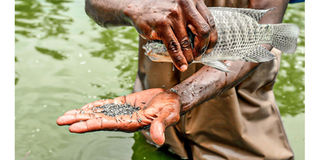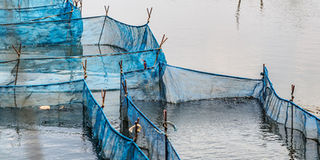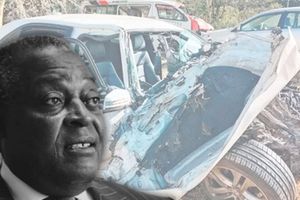Transforming commercial aquaculture in Kenya to meet the ever-growing demand for tilapia
Sponsored by Gatsby Africa

Tilapia eggs and fingerlings.
What you need to know:
- The supply-demand gap for tilapia in Kenya stands at 100,000 metric tonnes per year, making the country reliant on imports.
- However, the tide has slowly begun to turn.
By James Mwangi
Populations in Africa are growing rapidly, with Kenya’s alone expected to double by 2065.
With this growth will come an increased demand for food, and crucially, the protein necessary to feed the growing population.
Kenya is home to Africa’s largest freshwater lake – Victoria – which is the natural habitat of tilapia. With an abundance of the necessary natural farming conditions for this fish species, Kenya has the potential to greatly benefit from the growth of freshwater aquaculture.
The growth of the industry has the potential to generate up to 702 million low-carbon, protein rich meals and create employment.
However, the industry has been unable to live up to its full potential. Wild fish stocks have plummeted by more than 50 percent over the past two decades, and access to quality feed and other inputs has proved to be challenging for farmers.
Today, the supply-demand gap for tilapia alone stands at 100,000 metric tonnes per year, leaving Kenya reliant on imports.
However, the tide has slowly begun to turn. Aquaculture in Kenya has been growing steadily and continues to make significant strides. Over the past decade, pioneer businesses in the sector have driven transformation across the value chain.
The region is now home to dynamic, profitable firms able to generate millions of shillings for local economies while simultaneously supporting regional food security.
These pioneer farms have blazed the trail for cage farming on Lake Victoria and have grown rapidly, demonstrating viable, scalable and replicable business models for medium and large-scale cage farming.
This success has catalysed investments into other areas of the sector such as feed mills as well as increasingly specialised hatcheries.
Investments in the feed sub-sector have improved accessibility of locally produced high-quality feed with annual milling capacity nearing 50,000 metric tonnes.
The increase in local feed production could see the prices of aquafeed production come down by as much as 25 percent in the near future.
Building on this, the government is also directing its attention towards realising the full potential of aquaculture under the Blue Economy.
The development of a new spatial plan for the Kenyan side of Lake Victoria – the first of its kind in the region – will be an essential governance tool in planning for aquaculture siting and development, to mitigate conflicts between lake users and encourage investment in suitable areas.
The projects’ carrying capacity assessment lays the foundations for a more data-led approach to regulating the industry, by stipulating thresholds for biomass, hence encouraging investment while helping to mitigate environmental and biosecurity risks.
The sector is going from strength to strength, thanks to the ingenuity and innovation of farms, and government enthusiasm to realising this opportunity.

Hapas at Rocksprings fish farm/hatchery.
We estimate that in the last five years, tilapia production in Lake Victoria has risen six-fold to 13,000 metric tonnes in 2023, and is expected to rise a further four times in the coming five years, holding the potential to generate over 50,000 jobs and increased incomes.
For farmers, entrepreneurs and investors, there is a window of opportunity. Firms are operating profitably, the government is making strides in bolstering the enabling environment, while demand continues to rise.
So how do we transform this opportunity into a reality?
Aquaculture in Kenya continues to show real signs of momentum and growth, with a cohort of strong pioneers demonstrating the commercial potential of fish farming at SME and large-scale levels.
As the industry begins to take off, it is primed for new entrants, operators, entrepreneurs and investments.
Indeed, Kenya has great potential to scale its annual aquaculture production beyond 100,000 metric tonnes and to be competitive regionally and internationally.
More stories on how key industry players are transforming commercial aquaculture in Kenya, including government support, are packaged here.
James.mwangi@gatsbyafrica. org.uk.
James Mwangi is an Intervention Manager at Gatsby Africa, a foundation set up by Lord David Sainsbury, with a long history of engaging in East Africa across government, business and society. Gatsby Africa is committed to helping build stronger and more inclusive economies in East Africa by supporting the transformation of sectors that have the potential for inclusive, resilient, and competitive growth over the long-term. The foundation is currently working in diverse high-potential sectors: Aquaculture, Commercial Forestry, Livestock, Textiles and Apparel, Water and Tea. These sectors, if successfully transformed, are capable of inspiring a step change in the region’s growth, generating jobs and additional incomes.


